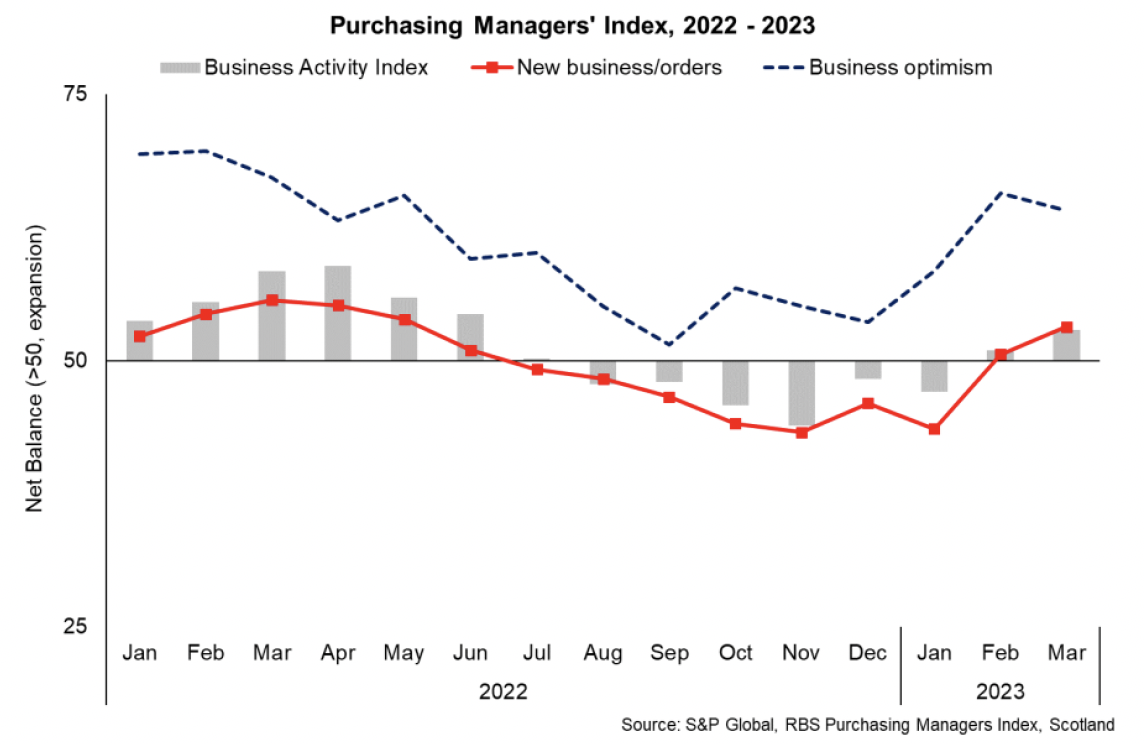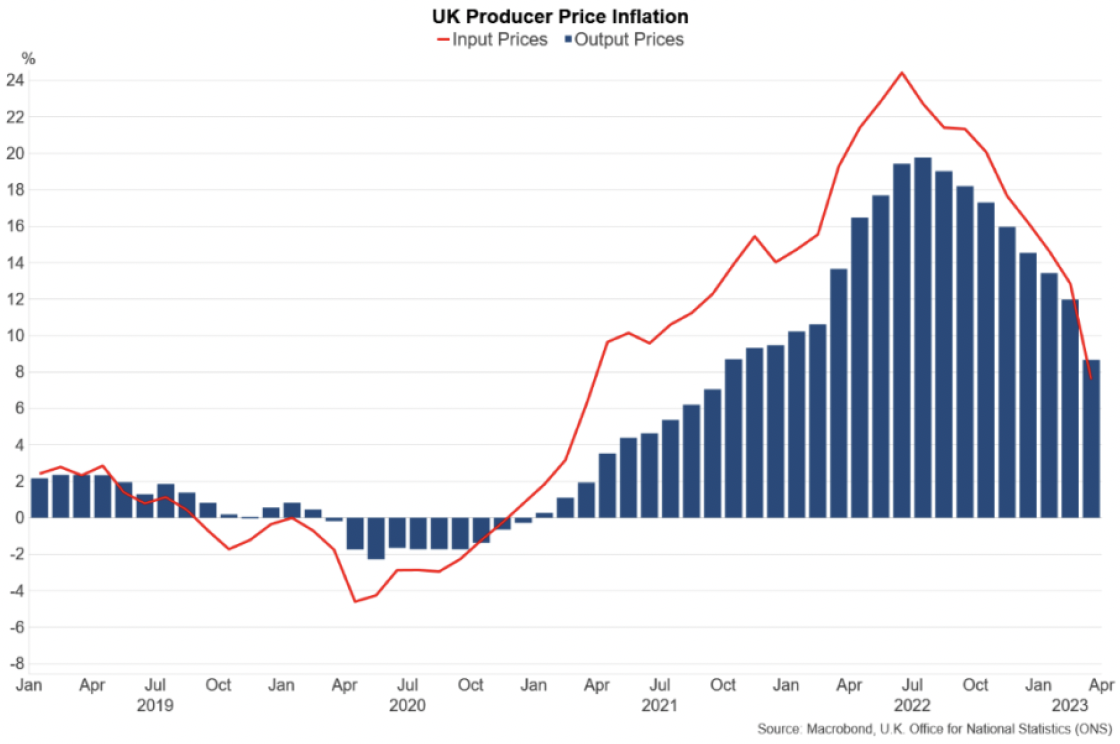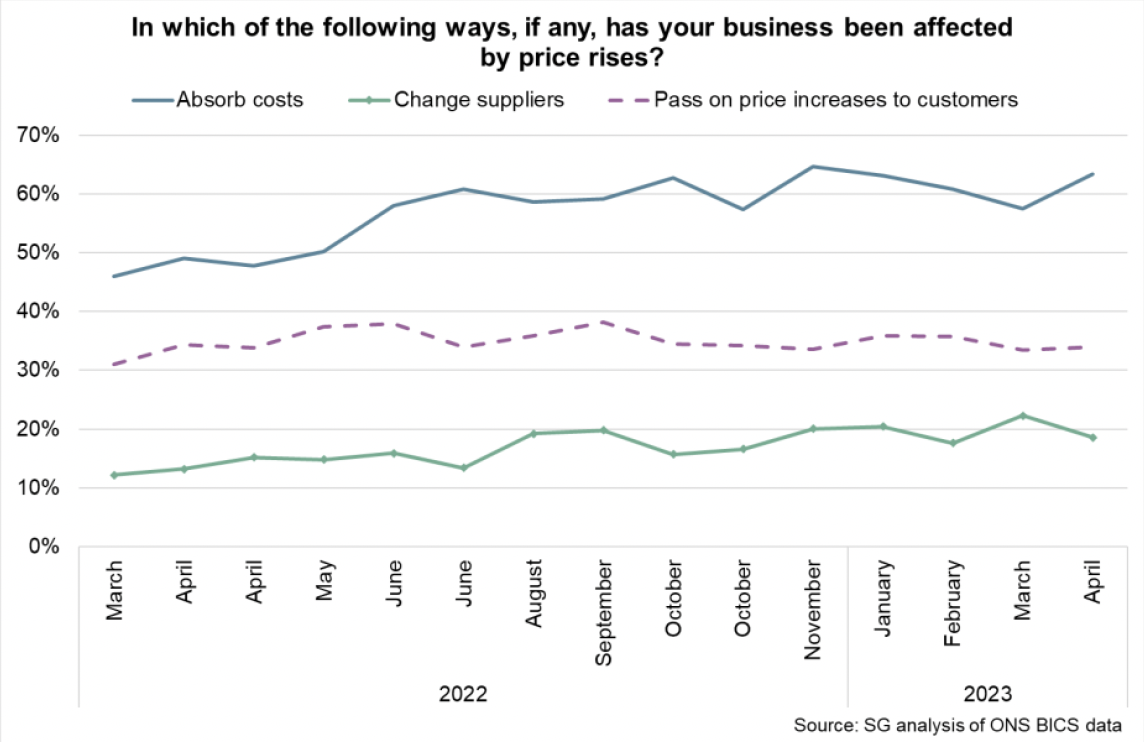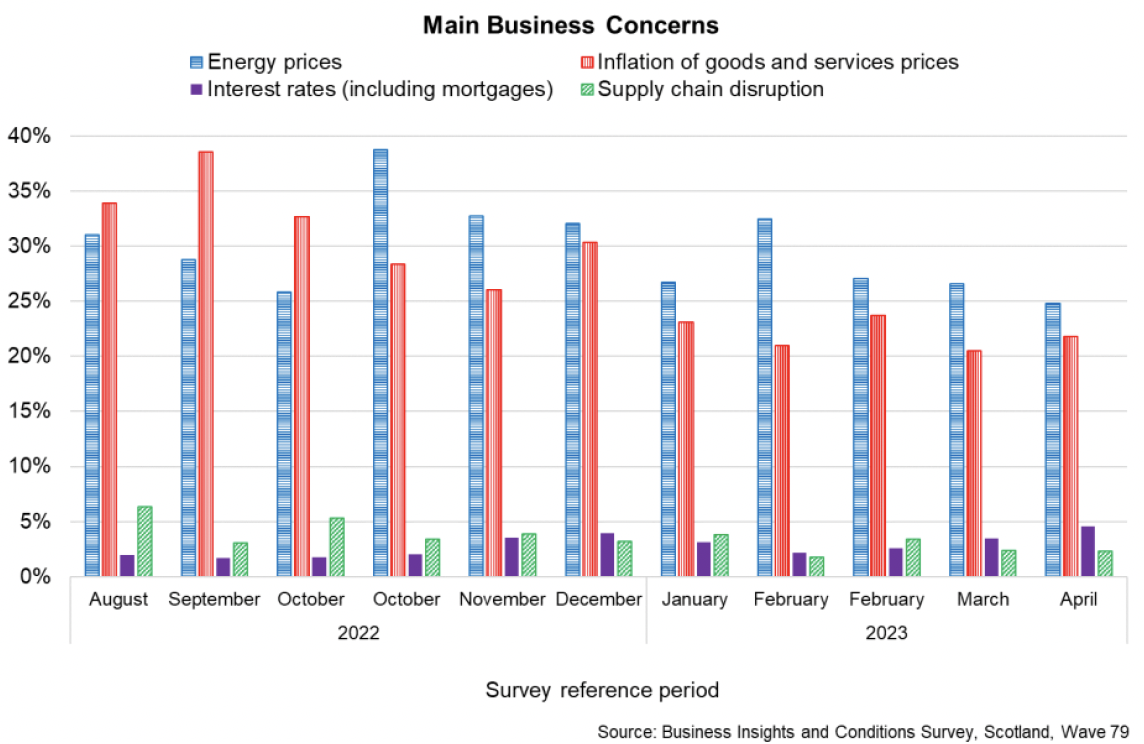Monthly economic brief: April 2023
The monthly economic brief provides a summary of latest key economic statistics, forecasts and analysis on the Scottish economy.
This document is part of a collection
Businesses
Business activity increased further in March, with optimism improving.
Business activity
- The Purchasing Managers Index (PMI) business survey indicates that business activity in Scotland's private sector has been improving from the end of 2022 and increased for the second consecutive month in March (52.9) and at its fastest pace since June 2022. [5]

- The increase in business activity reflected a further growth in incoming new business/orders (53.2), with respondents citing stronger demand and a strengthening in the pound against the dollar.
- Further, business optimism has strengthened sharply since the start of the year (64.1) with expectations of increased activity over the coming year. Despite a slight dip from February, concentrated in the services sector, sentiment remained positive and above the historical trend, with respondents' optimism stemming from expectations of new business development and projects in the pipeline.
Business costs
- Higher energy, materials and staffing costs continue to present significant challenges for businesses, however there are further indications that the pace of cost increases is easing.
- Producer price inflation (changes in the prices of goods bought and sold by UK manufacturers, including price indices of materials and fuels purchased and factory gate prices) rose by 7.6% over the year to March, however, slowed for the ninth consecutive month from its recent peak of 24.4% in June last year. [6]

- Similarly output price inflation also continued to ease back to 8.7% in March, down from the recent peak of 19.9% in July. Inputs of crude oil provided the largest downward contribution to the change in input price inflation, with prices falling 24.1% over the year, while petroleum products provided the largest downward contribution to output price inflation (prices fell 10.7% over the year).
- Food materials (home produced and imported) provided upward contributions to input prices and food products provided the largest contribution to output prices, with prices rising 15.5% over the year.
- PMI business survey data for Scotland also indicated that the pace of input price rises across the services and manufacturing sectors continued to moderate in March to the weakest rate in 22 months. Staffing costs, energy prices and food prices continuing to be reported as key drivers of cost rises.
- Business Insights and Conditions Survey (BICS) data provide latest insights into the effects on business of price rises. In April, 63.4% of businesses reported that they had to absorb costs, 34% reported having to pass on price increases to customers and 18.6% had to change suppliers. A much lower percentage of firms reported having to access more financial support (4.8%) and having to reduce staff work hours (6.4%). [7]

- There continues to be notable differences across sectors. For example, 19.4% of accommodation and food sector businesses and 7.7% of arts, entertainment and recreation businesses reported having to reduce staff work hours (compared to 6.4% for all businesses). Furthermore, 46.2% of accommodation and food sector businesses, 45.9% of manufacturing businesses and 45.4% of wholesale, retail and repair of vehicles businesses reported passing prices onto customers (compared to 34% for all businesses).
- This further reflects that cost rises are impacting sectors differently and business responses to price rises will reflect a range of factors such as the nature of the business and customer base within sectors and the options available to improve efficiency and reduce costs.

- Overall, the main concerns for businesses in April continues to be energy prices (24.8%), which has reduced from 38.7% in October last year, but remains elevated, and inflation of good and services prices (21.8%), which is also on a downward trend. Much lower and declining percentages of businesses are concerned about supply chain disruption (2.3%), which reflects wider business survey evidence which indicates that suppliers' delivery times improved notably in March. [8] 4.6% of respondents noted interest rates as the main concern for their business which has been on a slight upward trend over the past year and likely reflects the increase in Bank Rate over this period.
Contact
Email: OCEABusiness@gov.scot
There is a problem
Thanks for your feedback